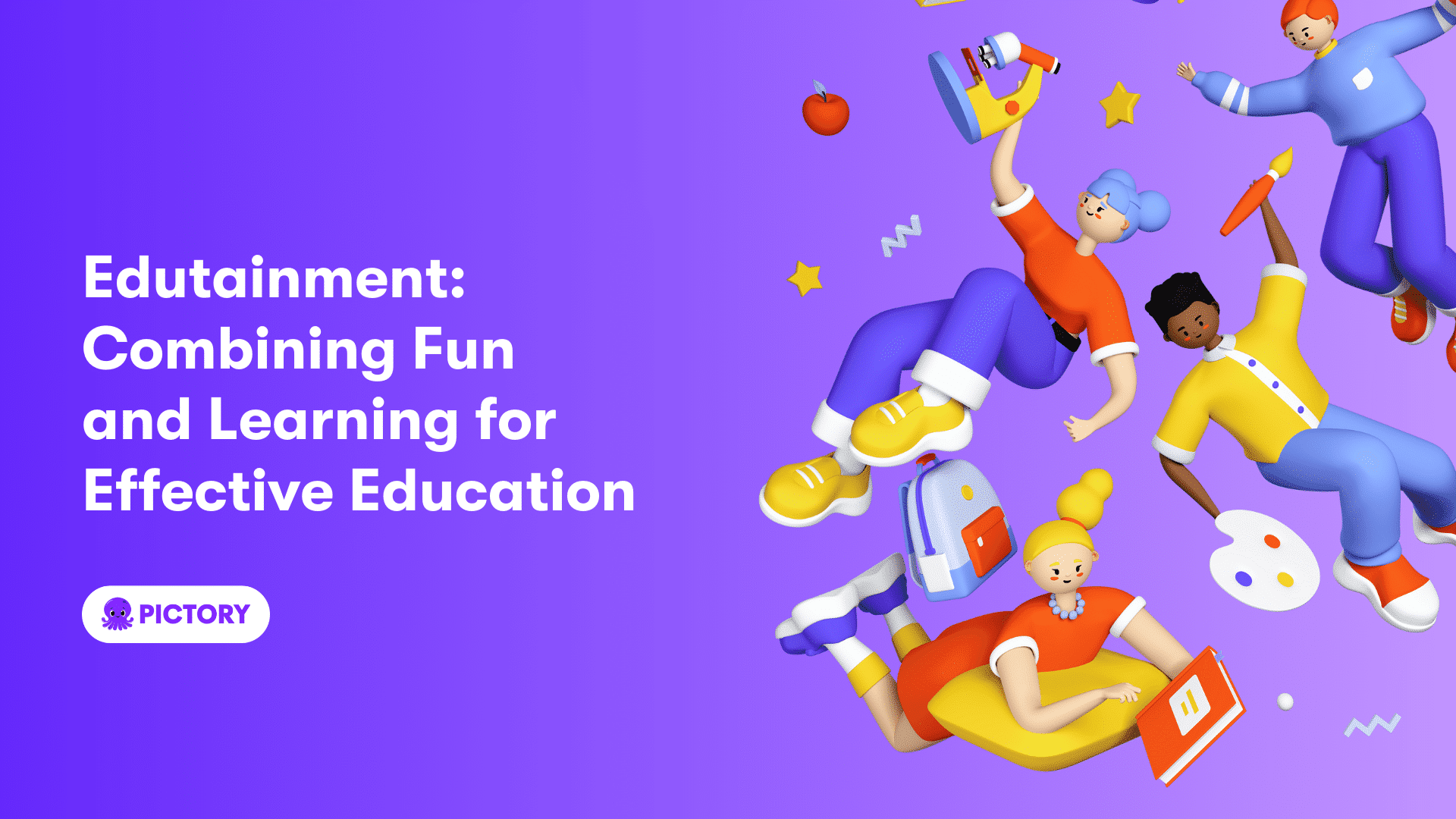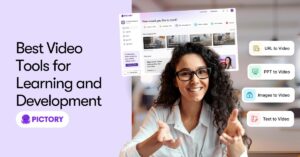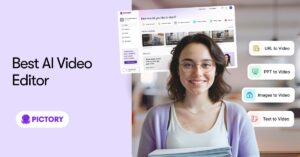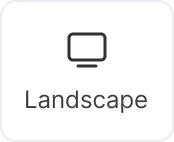Edutainment merges education and entertainment to make learning fun and effective.
It uses tools like games, videos, and virtual reality to engage students and improve retention.
Learn how edutainment is transforming education, making subjects more interesting and enhancing personalized learning experiences.
Key Takeaways
-
Edutainment merges education and entertainment to create engaging and effective learning experiences, dating back to the Renaissance and evolving significantly in the digital age.
-
Edutainment techniques like gamification, storytelling, and AR/VR enhance student engagement, imagination, creativity, and problem-solving skills, leading to better retention and personalization in learning.
-
Educational games, especially in subjects like mathematics, language learning, and coding, are transforming traditional education by making complex subjects accessible, enjoyable, and aligned with digital age skills.
Understanding Edutainment
Edutainment, a portmanteau of “education” and “entertainment,” is a concept that has been quietly shaping our learning experiences for centuries. While the term itself was coined in the 1970s by Robert Heyman during his work with the National Geographic Society, the idea of making learning enjoyable dates back to the Renaissance and Enlightenment periods.

Visionaries like Komenský championed the ‘school as play’ concept, incorporating dramatic elements into pedagogy, while Benjamin Franklin’s ‘Poor Richard’s Almanack’ blended puzzles with educational content, laying the groundwork for what we now recognize as edutainment.
Fast forward to the digital age, and edutainment has undergone a remarkable transformation. The advent of educational technology, multimedia, and interactive gaming has created dynamic learning environments that were once unimaginable.
From Walt Disney’s pioneering educational films like ‘Tommy Tucker’s Tooth’ to today’s sophisticated virtual reality experiences, edutainment has evolved into a powerful tool that enhances learning by increasing engagement, retention of information, and focus.
This evolution has not only made learning more enjoyable but has also opened up new possibilities for personalized, immersive educational experiences that cater to diverse learning styles and needs.
Benefits of Edutainment for Student Learning
The fusion of education and entertainment introduces numerous benefits to the learning process, converting traditionally dull subjects into intriguing adventures. Central to edutainment’s success is its potential to notably enhance student engagement.
By presenting educational content in an entertaining format, learners are naturally drawn to participate more actively in the learning process. This increased engagement leads to improved concentration and a remarkable enhancement in the retention of information.
When students are having fun, they’re more likely to stay focused and absorb knowledge effortlessly, making the learning experience both enjoyable and effective.
However, the advantages of edutainment are not limited to mere engagement. This modern approach to learning stimulates:
-
imagination and creativity among students
-
innovative problem-solving skills
-
spontaneity and cognitive development
-
cognitive flexibility
By presenting information in novel and exciting ways, edutainment encourages learners to think outside the box. It helps students to quickly adapt to new situations and think on their feet, which is an invaluable skill in our rapidly changing world.
Edutainment prepares students for future challenges both in their academic journey and beyond.
Perhaps one of the most significant advantages of edutainment is its ability to facilitate personalized learning journeys. In traditional educational settings, it’s often challenging to cater to the diverse needs and learning styles of every student.
Edutainment, however, leverages technology to create adaptive learning experiences that can adjust to each learner’s pace and preferences. This personalization not only makes learning more effective but also helps in developing crucial interpersonal skills.
The impact of this approach is tangible; AI-predicted educational outcomes using edutainment techniques have saved over 34,712 students from failing by identifying at-risk students early and providing tailored support.
This remarkable statistic underscores the power of edutainment in not just making learning fun, but in fundamentally transforming educational outcomes.
Popular Edutainment Techniques
As we explore the realm of edutainment more thoroughly, it’s critical to comprehend the primary techniques contributing to its effectiveness.
Three popular methods are noteworthy: gamification, storytelling, and the deployment of Augmented Reality (AR) and Virtual Reality (VR). Each of these techniques brings unique elements to the learning process, fostering engagement, motivation, and immersive experiences.
Investigate how these novel approaches are transforming education and making learning not only effective but also genuinely enjoyable, as they enhance learning experiences.
Gamification
Gamification has surfaced as a potent edutainment instrument, revolutionizing the educational landscape by integrating gameplay elements into learning experiences.
This technique taps into the innate human desire for competition, achievement, and reward, making the learning process more engaging and motivating. In educational settings, gamification often involves systems of:
-
points
-
badges
-
rewards for task completion
-
leaderboards to highlight achievements
These game-like elements create fun learning experiences, fostering a more enjoyable atmosphere for students and encouraging them to actively participate in their own learning journey.
The beauty of gamification lies in its versatility and effectiveness across various subjects and age groups. Popular tools like Kahoot have revolutionized mathematics education by turning potentially dry topics into exciting, interactive challenges.
Similarly, platforms like Gimkit allow students to answer questions and earn in-game currency, blending learning with a sense of achievement and progress.
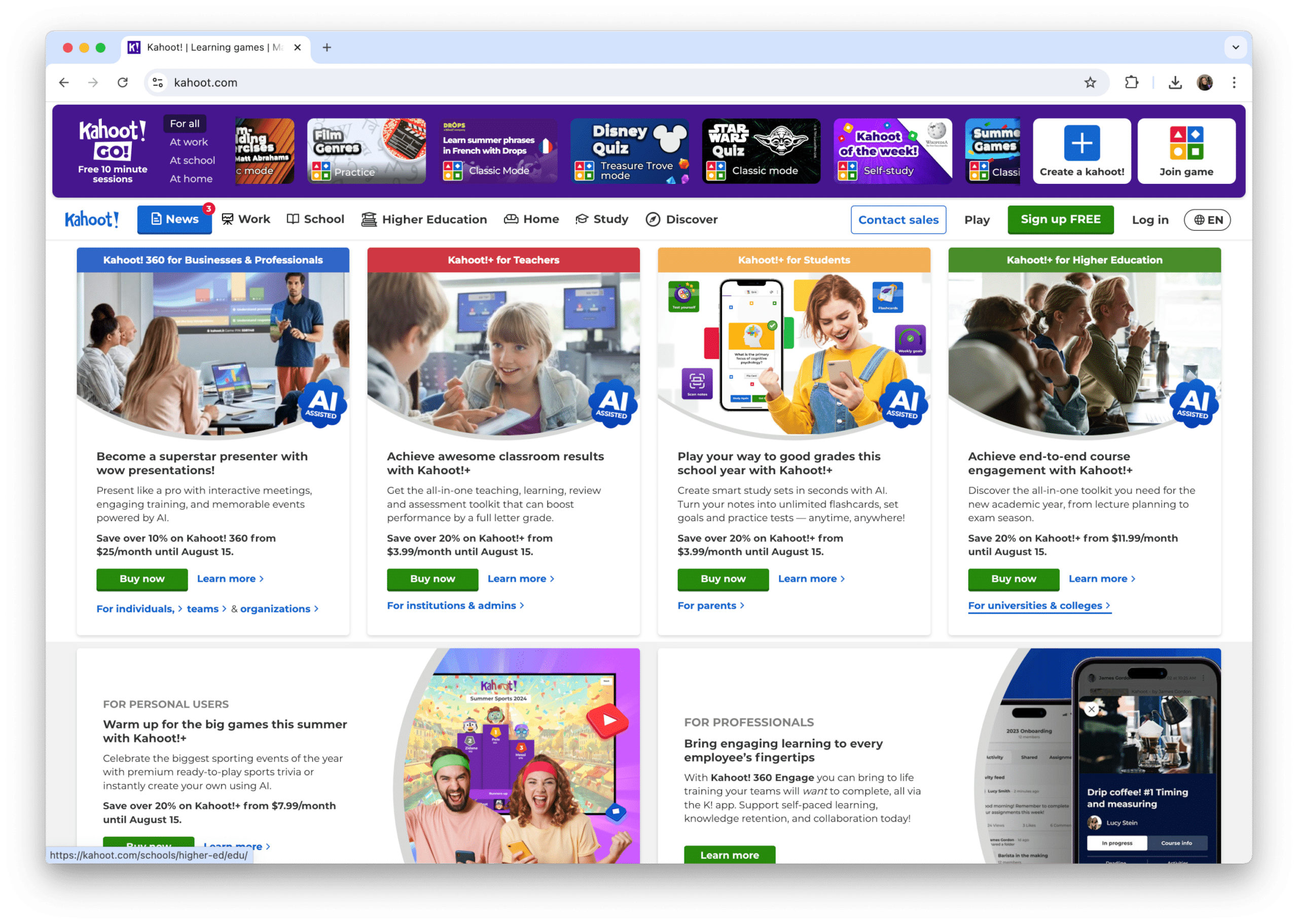
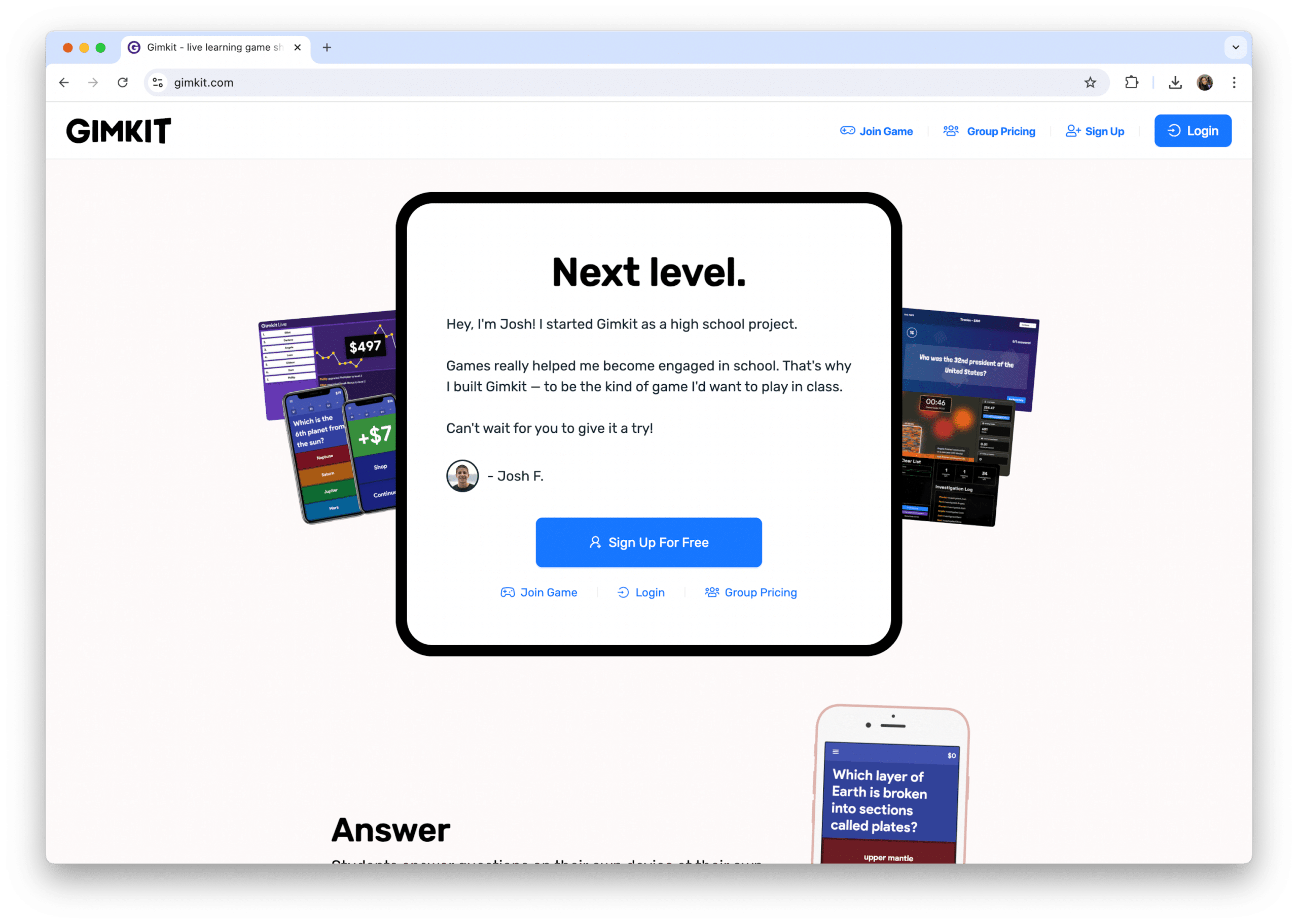
By incorporating friendly competition elements such as earning points, badges, and progressing through levels, gamification drives learner engagement and motivation to unprecedented heights.
This approach not only makes learning more enjoyable but also helps to teach students valuable skills like problem-solving, teamwork, and strategic thinking, preparing them for real-world challenges while they have fun mastering academic content.
Storytelling
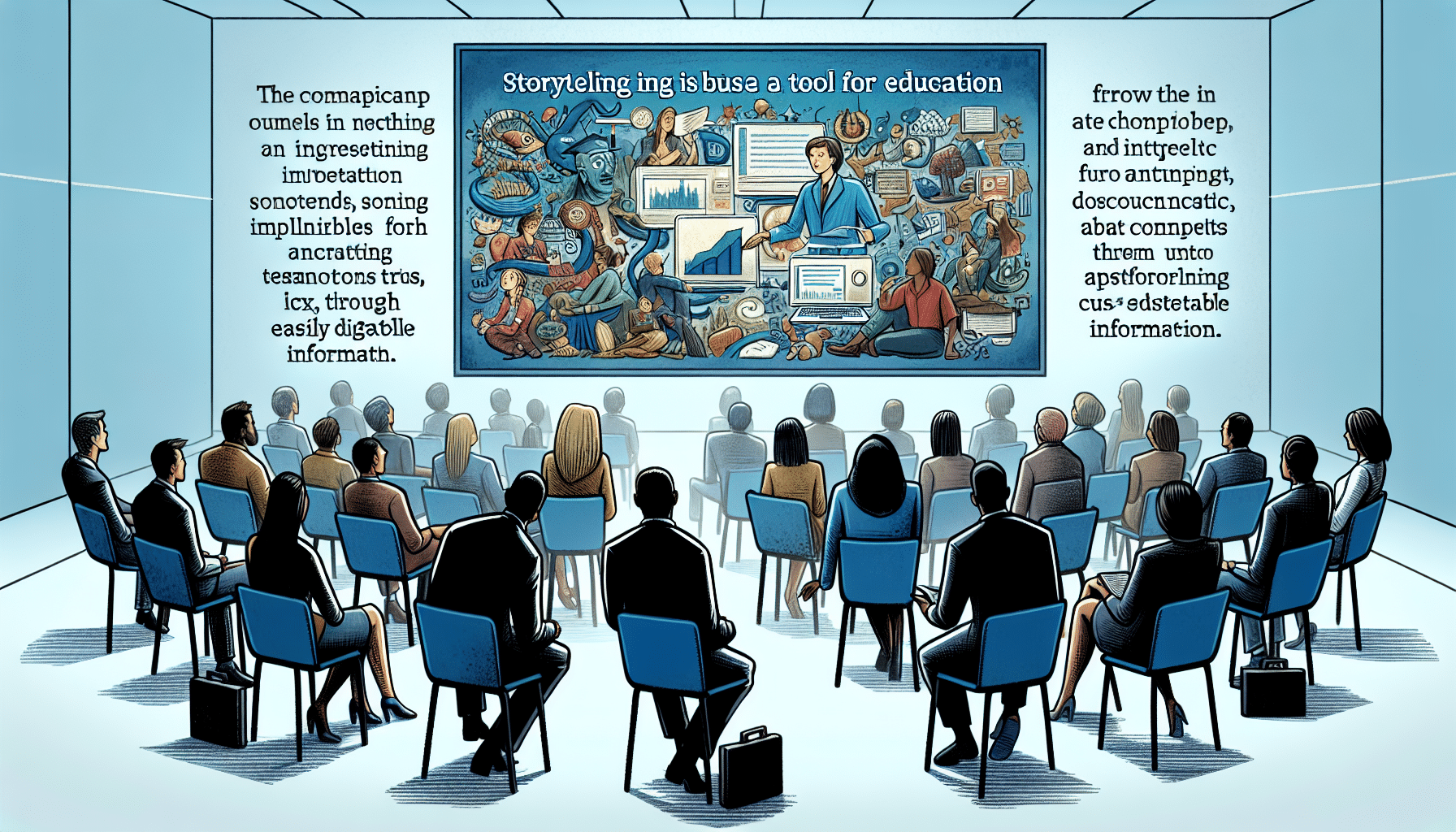
Storytelling, a timeless art, has discovered a new role within the domain of edutainment, demonstrating its worth as an irreplaceable tool in making abstract concepts understandable and memorable. By weaving educational content into narrative structures, storytelling helps learners connect with the material on a deeper, more emotional level.
This technique taps into the human brain’s natural affinity for stories, making it easier for students to understand, remember, and apply complex ideas. Whether it’s explaining historical events, scientific theories, or mathematical concepts, a well-crafted story can transform dry facts into an engaging journey of discovery.
In the corporate world, storytelling has become a cornerstone of effective training programs. Companies are increasingly turning to edutainment videos that combine animation and narrative to make complex topics more accessible and engaging for employees.
For instance, organizations like Ted-Ed have mastered the art of producing custom animated learning videos that help employees grasp new concepts quickly and effectively.
These videos often use a combination of compelling narratives, relatable characters, and visually appealing graphics to break down complex ideas into digestible chunks.
By presenting information in this storytelling format, companies are not only improving knowledge retention but also fostering a more engaging and enjoyable learning experience for their workforce.
Augmented Reality (AR) and Virtual Reality (VR)
Augmented Reality (AR) and Virtual Reality (VR) technologies have introduced a new era of immersive learning experiences, radically changing how we engage with educational content.
These cutting-edge tools create captivating, three-dimensional environments that allow learners to explore, experiment, and engage with subject matter in ways that were previously impossible.
By blending the digital and physical worlds, AR and VR provide hands-on learning experiences that are not only fun and educational but also risk-free, enabling students to practice skills and explore concepts without real-world consequences.
The applications of AR and VR in edutainment are diverse and exciting. In the realm of vocational training, games like Job Simulator use VR to create entertaining yet educational job-related simulations, allowing users to experience different professions in a playful, low-stakes environment. Museums, too, have embraced this technology, using augmented reality to bring historical artifacts to life.
Imagine pointing your smartphone at an ancient Egyptian sarcophagus and watching it open to reveal the mummification process, or seeing dinosaur skeletons come to life and roam around the exhibition hall.
These immersive experiences not only make learning more engaging but also help to contextualize information, making it more memorable and impactful for learners of all ages.
Educational Games Transforming Learning
Educational games have surfaced as a potent force in reshaping the learning landscape, presenting an interactive and enjoyable approach to education that appeals to learners of all ages. These games create a fun learning environment where students can absorb information while progressing through engaging challenges and storylines.
By aligning game mechanics with learning objectives, educational games improve logical reasoning and decision-making skills, providing an interactive journey where knowledge acquisition feels less like a chore and more like an adventure.
From mathematics to language learning, and from coding to STEAM subjects, educational games are revolutionizing how we approach various disciplines, making complex concepts more accessible and enjoyable for learners.
Mathematics Education Games
Mathematics, often perceived as a challenging subject, has found a new lease on life through the world of educational games.
These innovative tools are transforming the way students engage with numbers, equations, and problem-solving, making mathematics not only effective but genuinely enjoyable.
Popular platforms like Prodigy, Mathletics, and Coolmath Games have taken the lead in this mathematical revolution, offering a diverse array of games designed to enhance problem-solving and arithmetic skills while keeping students entertained.
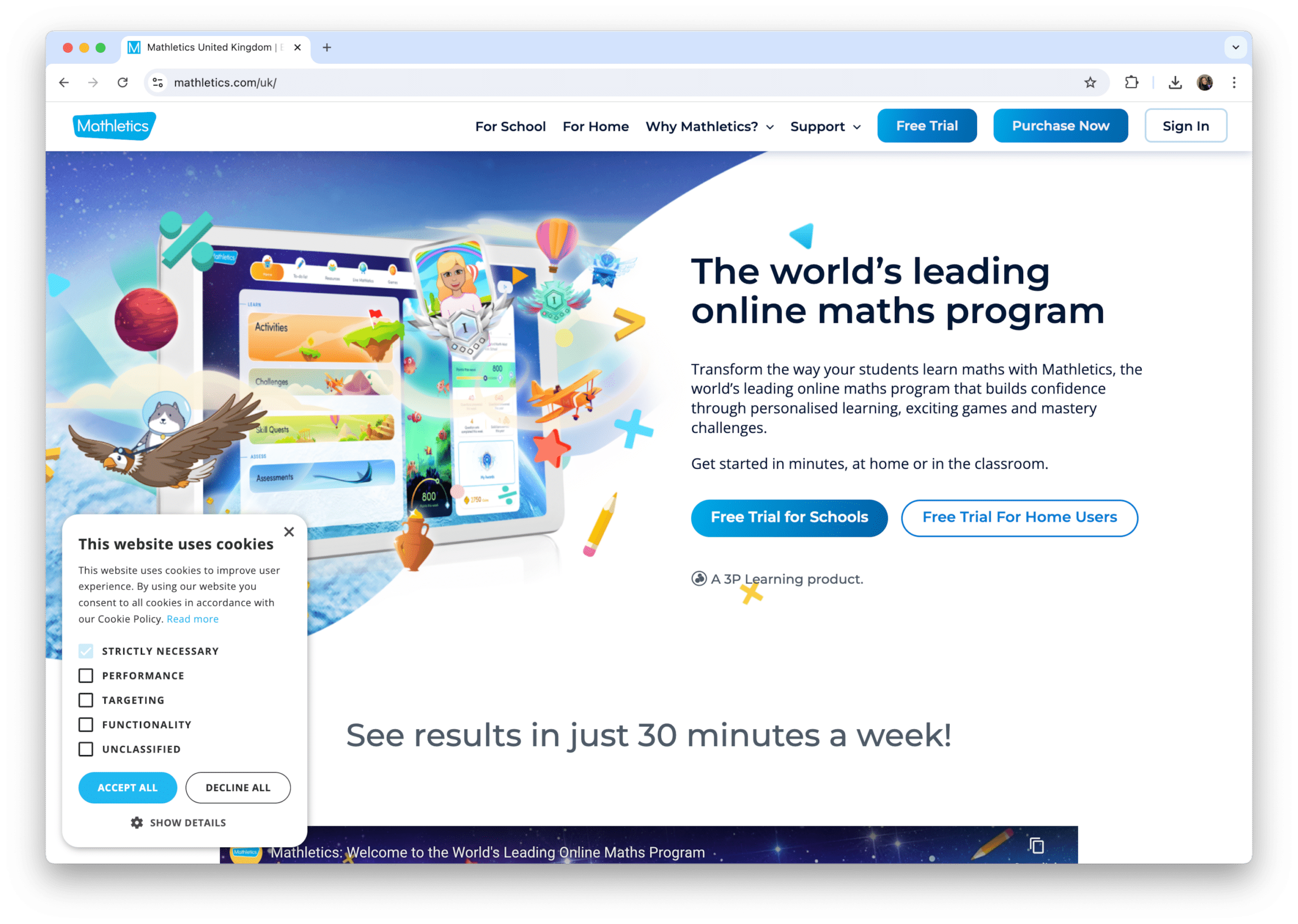
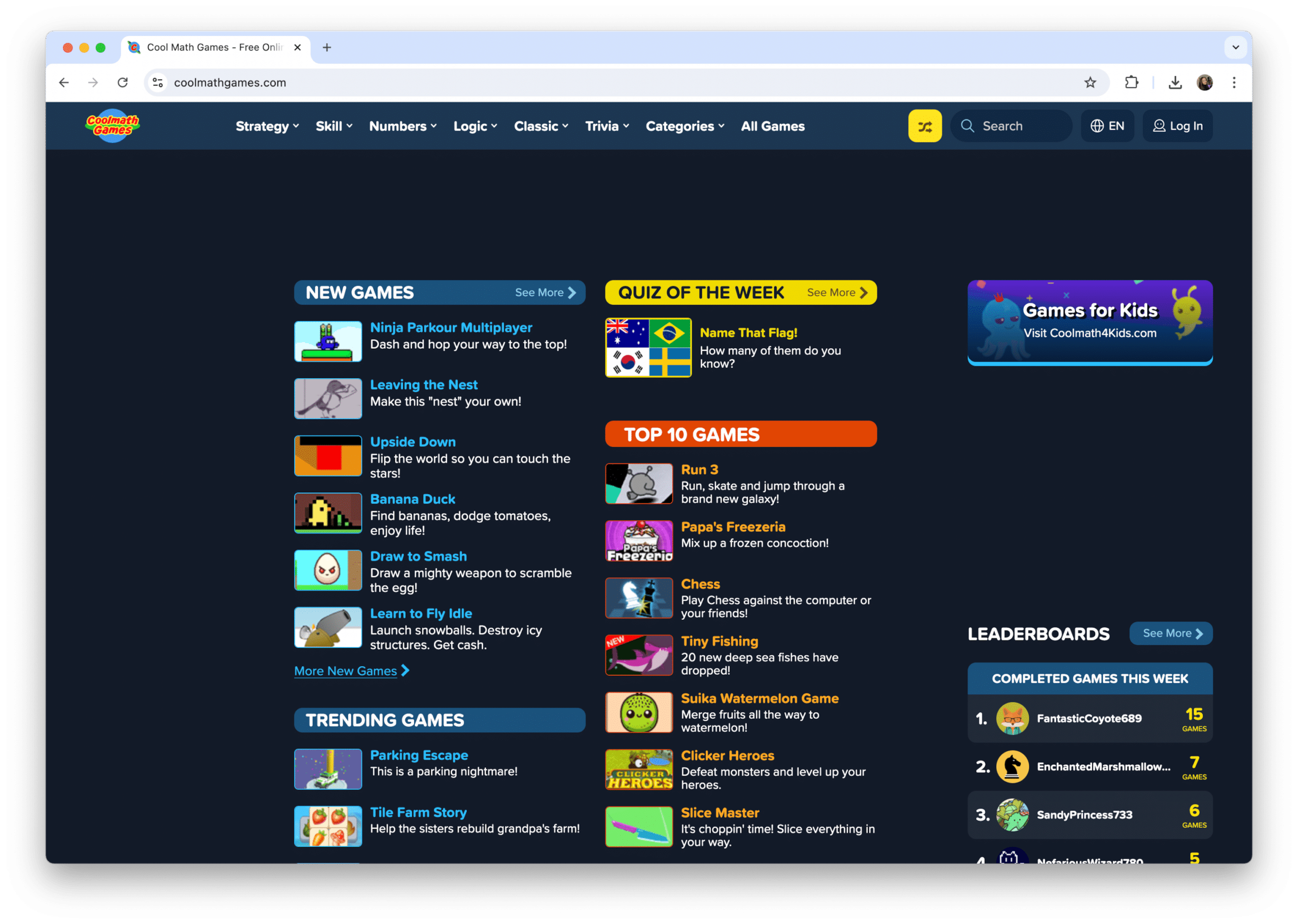
Each of these platforms brings something unique to the table:
-
Prodigy offers free, curriculum-aligned math games for Grades 1-8, boasting an impressive user base of over 20 million students.
-
Mathletics combines a variety of math activities with competitive elements, adding an extra layer of excitement to the learning process.
-
DreamBox Learning provides a gamified math program that adjusts to each student’s proficiency and learning style, ensuring a personalized learning journey.
-
Reflex Math focuses on helping students of all ability levels develop fluency with basic math facts, building a strong foundation for more advanced concepts.
These games are not just passing fads; they represent a fundamental shift in mathematics education, encouraging students to engage more deeply with mathematical concepts and develop a genuine enthusiasm for the subject.
Language Learning Games
Language learning games have revolutionized the way we approach foreign language acquisition, turning what was once a daunting task into an engaging and enjoyable experience.
These games cater to learners of all levels, from beginners to advanced students, offering a diverse range of activities that build vocabulary, improve fluency, and enhance problem-solving skills.
For instance, the game ‘Go Fish’ has proven particularly effective for beginner language learners, helping them master basic vocabulary and hone their listening skills in a fun, interactive setting.
As learners progress, more advanced games come into play. ‘Licence Plate,’ for example, challenges intermediate and advanced learners to think quickly and construct sentences, focusing on syntax and rapid language processing.
For those seeking a more comprehensive language learning experience, apps like Mindsnacks offer a range of mini-games covering vocabulary, grammar, and listening skills.
The impact of these games extends beyond mere entertainment; AI voice technology integrated into language learning apps has helped over 800,000 students across Latin America, Korea, and Japan improve their English skills.
Popular apps like Duolingo, Lingo Deer, and Babbel have further democratized language learning, making it accessible and enjoyable for millions of users worldwide.
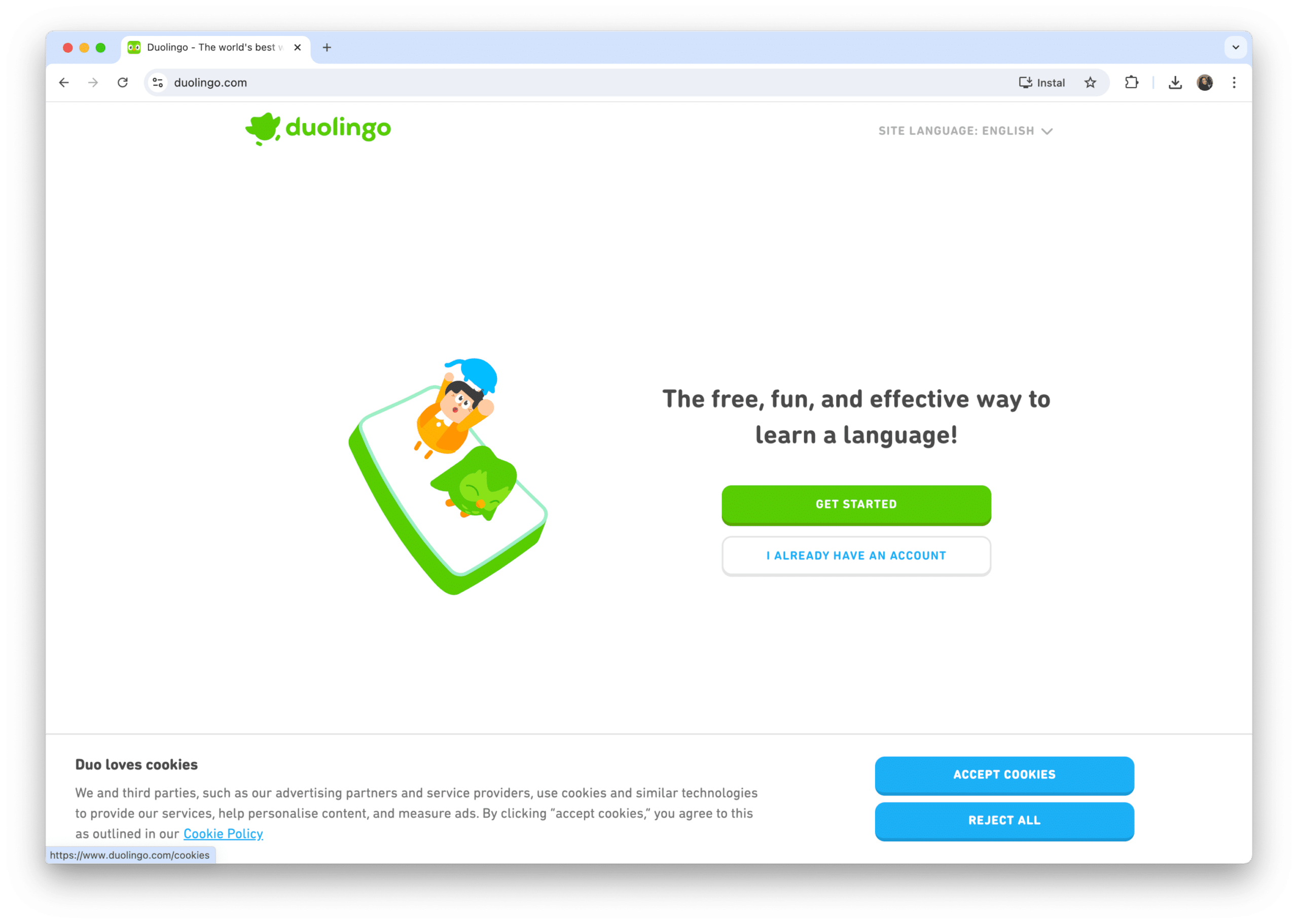
Coding and STEAM Games
In our increasingly digital world, coding and STEAM (Science, Technology, Engineering, Arts, and Mathematics) skills have become essential. Recognizing this, edutainment has stepped up to the plate, offering a plethora of games that introduce young learners to these crucial subjects in a fun and engaging manner.
Games like Kodable, Scratch, and Lightbot serve as gateways to the world of programming, making complex concepts accessible to children through playful interfaces and gradual skill progression.
The diversity of coding and STEAM games caters to various learning styles and interests. Some examples include:
-
Tynker, which offers coding challenges that align with school curricula, providing a structured path for students to learn programming while still feeling like they’re playing a game.
-
CodeMonkey, which starts with simple pseudocode and gradually progresses to real coding languages like Python, making the transition to actual programming smooth and intuitive.
-
CodeCombat, which uses game mechanics to teach programming fundamentals in JavaScript and Python, making the learning process feel more like an adventure than a lesson.
Beyond pure coding, games like LEGO MINDSTORM bring robotics into the mix, teaching coding alongside real-life problem-solving skills in classrooms. For a more open-ended experience, Minecraft: Education Edition allows students to explore STEAM subjects through building and coding challenges in a virtual world they’re likely already familiar with and excited about.
Even for more advanced learners, games like Elevator Saga challenge players to code the functionality of an elevator in JavaScript, increasing in difficulty over multiple levels and providing a taste of real-world programming challenges.
These diverse offerings ensure that regardless of a student’s starting point or interests, there’s a coding or STEAM game that can spark their curiosity and fuel their learning journey.
Edutainment Beyond the Classroom
Although edutainment has made considerable progress in conventional educational settings, its influence reaches well beyond the confines of the classroom.
In recent years, we’ve seen a remarkable transformation in how educational institutions and public spaces approach learning, with a growing emphasis on interactive and engaging experiences.
Museums, in particular, have been at the forefront of this revolution, constantly seeking innovative ways to connect with their audiences and make learning a more immersive experience.
One of the most exciting developments in this arena is the incorporation of interactive displays in museums. These displays create hands-on learning experiences that engage visitors on multiple sensory levels, making the acquisition of knowledge not just a passive activity but an active, participatory process. Some examples of interactive displays in museums include:
-
Touchscreens
-
Interactive kiosks
-
Videos
-
3D models
-
Games
This level of interactivity enables a more personalized exploration of artifacts and artworks, catering to different learning styles and interests.
The use of cutting-edge technology in museums has taken interactivity to new heights. Some examples include:
-
Projection mapping, which brings exhibits to life and creates immersive experiences that transport visitors to different times and places.
-
Virtual Reality (VR) installations, which allow visitors to explore artifacts and simulations in ways that were previously impossible, breaking down physical barriers and offering new perspectives on historical events or scientific phenomena.
-
RFID tags and sensors, which trigger audio or video playback near artifacts, enhancing visitor engagement and providing context-sensitive information.
These technological advancements are not just gimmicks; they represent a fundamental shift in how we approach education in public spaces, making learning a more dynamic, engaging, and memorable experience for visitors of all ages.
Case Studies: Real-World Applications of Edutainment
The practical applications of edutainment are as varied as they are influential, encompassing different sectors and addressing a broad spectrum of educational needs. Some examples include:
-
AI-powered chatbots revolutionizing student support in higher education
-
Interactive museum exhibits bringing history to life
-
Virtual reality simulations for hands-on learning experiences
-
Gamified language learning apps
-
Educational television programs and documentaries
Edutainment is proving its worth as a widely used edutainment tool in numerous entertaining and educational content, including edutainment games and various edutainment experiences, all while providing incidental entertainment value and word edutainment.
Corporate training programs are leveraging these techniques to enhance employee skills more effectively, while media campaigns are using edutainment principles to raise awareness about critical social issues.
These case studies not only demonstrate the versatility of edutainment but also highlight its potential to transform how we approach learning and information dissemination in various aspects of society.
Museum Interactive Exhibits
Museums have undergone a remarkable transformation in recent years, evolving from static displays of artifacts to dynamic, interactive learning environments. This shift is exemplified by the innovative use of technology to create engaging and educational experiences for visitors.
For instance, Boulevard has pioneered virtual art museum tours that allow students to interact with famous artworks in Augmented Reality (AR) and Virtual Reality (VR), bringing masterpieces to life in ways previously unimaginable.
These virtual tours not only make art more accessible but also provide a deeper, more immersive understanding of the artworks and their historical context.
But it’s not just digital technology that’s revolutionizing museum experiences. Many institutions are also incorporating live, interactive elements to make history more tangible and relatable.
The North Carolina Museum of History, for example, has employed talented actors to bring historical figures like John Adams and Thomas Jefferson to life. These interactive historical reenactments provide visitors with a unique opportunity to “meet” and converse with key figures from the past, making learning about history an engaging and lively experience.
This blend of education and entertainment strikes a delicate balance, creating satisfying and educational visitor experiences that cater to diverse learning styles and preferences.
By combining education with these interactive elements, museums and theme parks are not only making learning more engaging and personal for visitors but are also ensuring that the knowledge imparted leaves a lasting impression.
Corporate Training Programs
Corporate training has undergone a significant transformation with the advent of edutainment techniques, revolutionizing how companies approach employee development.
By incorporating educational games and cutting-edge technology, businesses are enhancing customer engagement, improving employee training effectiveness, and boosting loyalty and retention.
This shift towards more entertaining and educational training programs has proven to be not just engaging but highly effective in imparting complex skills and knowledge.
One of the most exciting developments in this field is the use of Virtual Reality (VR) simulations. These immersive experiences provide hands-on learning opportunities that are both highly effective and risk-free, allowing employees to practice and refine their skills in realistic scenarios without real-world consequences.
For instance, Job Simulator offers VR experiences that simulate various jobs, such as being a store clerk or a gourmet chef, providing a fun yet educational way to understand different roles within an organization.

Moreover, the integration of Artificial Intelligence (AI) in corporate training has shown remarkable results. Adaptive learning tools powered by AI have improved test scores by 62% in corporate training contexts, while AI-enhanced chatbots have provided personalized assistance to employees with over 91% accuracy.
The return on investment (ROI) for these innovative training methods can be measured through increased engagement metrics, sales, and productivity, alongside intangible benefits like improved brand perception and employee morale.
This data-driven approach to training offers several benefits:
-
Makes the learning process more enjoyable
-
Ensures that the skills acquired are directly applicable to the workplace
-
Leads to tangible improvements in performance and job satisfaction.
Media Designed for Social Issues
In the realm of social change and public awareness, edutainment has emerged as a powerful tool for addressing critical issues and educating the masses. Entertainment-education programs on television have been particularly effective in raising awareness about sensitive topics such as HIV/AIDS and family planning.
These programs skillfully blend important messages with engaging storylines, making complex or taboo subjects more accessible and less intimidating for viewers.
A prime example of this approach is MTV Shuga, a popular television series that has made significant strides in educating African youth about sexual health, HIV, and gender-based violence. The show’s third season, in particular, demonstrated the power of edutainment in effecting real change, with viewers showing improved knowledge and attitudes towards these crucial issues.
Similarly, soap operas in various countries have incorporated educational storylines, using the power of narrative to inform viewers about social issues while keeping them entertained.
This approach extends beyond just health and social issues; educational entertainment principles are also being applied to highlight specific healthcare conditions and broader healthcare challenges.
By weaving important information into compelling stories and relatable characters, these media initiatives are breaking down barriers, sparking conversations, and promoting positive behavior change in ways that traditional educational methods often struggle to achieve.
Choosing the Right Edutainment Tools
In the extensive field of edutainment, choosing appropriate tools can significantly impact the creation of effective and engaging learning experiences.
The key to success lies in choosing platforms that are not only educational but also user-friendly and adaptable to various learning needs.
User-friendliness is paramount; platforms with intuitive interfaces and clear dashboards enhance user experience and retention, ensuring that learners can focus on content rather than struggling with the technology.
When evaluating edutainment tools, it’s crucial to consider their content customization capabilities. The best e-learning platforms support a variety of content formats, including video, audio, and interactive simulations, catering to different learning styles and preferences.
Features like drag-and-drop elements and multimedia embedding allow educators to tailor content to specific learning needs, making the educational experience more personalized and effective.
Additionally, robust assessment capabilities, such as quizzes and automated grading, are essential for evaluating student performance and tracking progress over time.
Integration is another critical factor to consider. The ideal edutainment tool should offer:
-
Seamless integration with existing Learning Management Systems (LMS), centralizing course management and making it easier for educators to incorporate new tools into their existing workflows.
-
Immediate and responsive user support via chat or email, along with comprehensive help resources, ensuring that both educators and learners can quickly resolve any issues they encounter.
-
The ability to integrate with third-party applications such as video conferencing tools and cloud storage, further enhancing the platform’s functionality and creating a more comprehensive and versatile learning environment.
Lastly, for corporate settings, consider edutainment tools that can be tailored to reflect a brand’s identity and culture, ensuring a consistent user experience that aligns with organizational values and goals. By carefully considering these factors, educators and organizations can select edutainment tools that not only make learning enjoyable but also drive meaningful educational outcomes.
Summary
As we’ve journeyed through the multifaceted world of edutainment, it’s clear that this innovative approach to learning is more than just a passing trend—it’s a powerful force reshaping education across various sectors. From the gamification of mathematics to the use of virtual reality in corporate training, edutainment is breaking down barriers between learning and play, making education more engaging, effective, and accessible than ever before.
The future of edutainment is bright and full of possibilities. As technology continues to evolve, we can expect even more immersive and personalized learning experiences that cater to individual needs and learning styles.
The key to harnessing the full potential of edutainment lies in striking the right balance between entertainment and educational content, ensuring that the fun factor enhances rather than detracts from the learning objectives.
As educators, learners, and organizations embrace these innovative approaches, we’re poised to enter a new era of education—one where learning is not just a necessity but a joyful, lifelong adventure. The journey of discovery never ends, and with edutainment, it promises to be an exciting ride for all involved.
Frequently Asked Questions
How effective is edutainment compared to traditional teaching methods?
Edutainment has proven to be significantly effective compared to traditional teaching methods, as it can increase engagement, improve information retention, and enhance problem-solving skills. It’s important to integrate edutainment with traditional methods rather than completely replacing them to maximize its effectiveness.
Are there any potential drawbacks to using edutainment in education?
Yes, while edutainment offers many benefits, it’s important to consider potential drawbacks such as dilution of educational content, shallow learning, and increased dependency on gamified elements for motivation. Striking a balance between entertainment and educational value is crucial for meaningful learning outcomes.
How can educators incorporate edutainment into their teaching practices?
Educators can incorporate edutainment by using educational games, storytelling techniques, and augmented reality tools, while also gamifying lessons with point systems and leaderboards. It’s important to choose user-friendly tools that align with the curriculum and allow for content customization.
How is edutainment being used outside of traditional classroom settings?
Edutainment is being used outside traditional classroom settings in various ways. Museums, corporate training programs, media campaigns, and educational apps are all incorporating interactive and engaging techniques to promote learning and skill development.
What should I consider when choosing edutainment tools for my organization or classroom?
Consider user-friendliness, content customization, assessment features, integration with existing systems, user support, and adaptability to specific needs. Also, trial different tools and gather feedback from users to make an informed decision.

